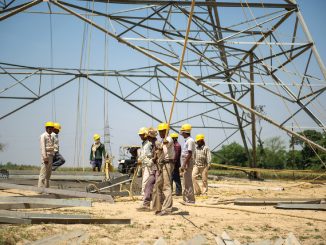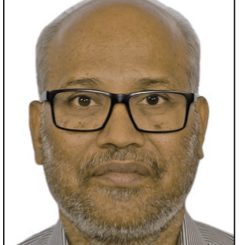 The Central Electricity Regulatory Commission (CERC) has issued two suomotu orders on general network access (GNA). These orders, issued in October 2023, are aimed at mitigating difficulties in implementing certain provisions of the CERC (Connectivity and General Network Access to the Inter-State Transmission System) Regulations, 2022. These provisions included the treatment of land bank guarantees (BGs) in the event of the closure of the connectivity application due to the non-submission of applicable connectivity BGs (Conn-BG), a special dispensation for the transition period for the payment of transmission charges, and extension of timelines to apply for the grant of GNA by state transmission utilities (STUs). Power Line takes a look at these CERC orders…
The Central Electricity Regulatory Commission (CERC) has issued two suomotu orders on general network access (GNA). These orders, issued in October 2023, are aimed at mitigating difficulties in implementing certain provisions of the CERC (Connectivity and General Network Access to the Inter-State Transmission System) Regulations, 2022. These provisions included the treatment of land bank guarantees (BGs) in the event of the closure of the connectivity application due to the non-submission of applicable connectivity BGs (Conn-BG), a special dispensation for the transition period for the payment of transmission charges, and extension of timelines to apply for the grant of GNA by state transmission utilities (STUs). Power Line takes a look at these CERC orders…
Order dated October 1, 2023
Central Transmission Utility of India Limited (CTUIL) highlighted certain additional difficulties faced in the implementation of the GNA Regulations through its letters dated September 22, 2023 and September 29, 2023. It also sought clarification on a few aspects. Further, Grid-India, in its letter dated September 11, 2023, requested certain relaxations under these regulations. Consequently, the commission addressed these issues in its suomotu order dated October 10, 2023, which primarily focused on four key concerns.
The first issue was related to the GNA for power drawal by Indian Railways at the ISTS point of Allahabad (Naini). The CERC determined that for Indian Railways, a group of transmission service substations located in a state and directly connected to the ISTS will be treated as one “fragmented control area”, and the relevant regional load despatch centre (RLDC) will be responsible for its scheduling, metering and balancing; applicability of ISTS charges and losses; etc. In light of submissions by CTUIL and REMCL indicating that Indian Railways was already drawing power at Naini, in addition to Dadri and Auraiya, and had plans to draw power at Abdullapur, and taking into account its order dated November 5, 2015, the CERC allowed Indian Railways to utilise its GNA quantum of 130 MW at Dadri, Auraiya, Naini and Abdullapur. Further, if Indian Railways requires additional GNA, it may submit an application for such capacity under the GNA Regulations.
Another issue taken up by the CERC was the treatment of land BGs in cases where Conn-BG1, Conn-BG2 and Conn-BG3 were not submitted as required, following the in-principle grant of connectivity. The CERC reiterated that as per the GNA Regulations, the applicant is required to submit Conn-BG1, Conn-BG2 and Conn-BG3, as applicable, subsequent to in-principle grant of connectivity. In case of failure to furnish the applicable Conn-BGs within the stipulated timelines, the application for connectivity must be closed. Hence, the commission decided that in case the application of an entity is closed due to non-submission of Conn-BG1, Conn-BG2 or Conn-BG3, the BG of Rs 1 million per MW submitted in lieu of land documents must be returned within one month from the closing of the connectivity application.
The CERC also addressed the issue of payment of transmission charges for temporary GNA (T-GNA) under the advance and exigency application category. Grid-India had submitted that the implementation of the regulatory provision requires an entity to furnish transmission charges for T-GNA in advance, with the due date for payment varying depending on the commencement date of T-GNA. However, since the existing software is configured to take payment within three working days from the date of approval of T-GNA, the payment of T-GNA as per the GNA Regulations would require software changes and, thus, some more time. So, to ensure the smooth implementation of the GNA Regulations and carry out software changes pertaining to the payment of transmission charges in the T-GNA advance application category (for T-GNA up to one month), the CERC decided to allow a special dispensation for a transition period. During this period, for T-GNA starting within the next three working days and for the exigency application category, payment will be made within three working days from the approval of the application as per the existing practice. Moreover, Grid-India was advised to carry out the necessary software changes within two months from October 1, 2023, after which transmission charges would be paid as per the timeline specified in the GNA Regulations.
The last issue taken up by the commission in this order was regarding the extension of timeline for STUs to apply for the grant of GNA. The CERC noted that as per the GNA Regulations, STUs are allowed to apply for additional GNA quantum within three months of the regulations coming into effect, and only once a year after September. Nonetheless, considering the transition from the 2009 Connectivity Regulations to the GNA Regulations, the CERC found it appropriate to allow STUs to apply for additional GNA for any quantum till March 31, 2024, which will be considered for grant by CTUIL as per the GNA Regulations.
Order dated October 7, 2023
Grid-India, in its letter dated September 26, 2023, had highlighted certain difficulties being faced in the implementation of the GNA Regulations and sought clarification on a few aspects. Hence, the CERC issued a suomotu order, under petition no. 16/SM/2023, dated October 7, 2023, to address these issues submitted by other stakeholders and provide clarifications.
The first issue was associated with the scheduling of generating stations connected to both the STU and CTU systems, specifically two generating stations – Kanti Bijlee Utpadan Nigam Limited (KBUNL) and Dhariwal Infrastructure Limited (DIL).
With regard to KBUNL, the CERC opined that, for the purpose of scheduling of power from the KBUNL busbar over for the host state, GNA equal to the installed capacity of KBUNL minus 126 MW (connectivity to the ISTS) will be considered by the Eastern Regional Load Despatch Centre (ERLDC). The commission also clarified that when the host state does not offtake its power, or reallocates it to the host state or some other state, or the generating station sells such power in the market or for any other reason, any quantum of power exceeding 126 MW will be considered as flowing through the STU system of Bihar. In such instances, the generating stations must obtain a “no-objection certificate” (NOC) from the host state. Accordingly, the STU may issue an NOC to schedule power of more than 126 MW outside the state, subject to the payment of wheeling charges as per the SERC regulations. The generating station is required to submit such an NOC to CTUIL and the ERLDC, to facilitate the scheduling of power. With this arrangement, the ERLDC will schedule the full power capacity of KBUNL at its busbar.
The CERC observed that the case of DIL was similar to that of KBUNL. Therefore, for scheduling power from such stations to the host state, the quantum of connectivity with the host state will be considered by the RLDC as GNA at the generation busbar, which can be utilised to schedule power to the host state. Moreover, since MSLDC and MSETCL had given their no-objection, no additional NOCs from MSLDC and MSETCL would be required. Accordingly, DIL can get its power scheduled to the ISTS for more than 300 MW under the GNA quantum at its busbar, including the connectivity quantum with the STU, subject to the payment of wheeling charges as per the CERC’s order dated July 25, 2022, in cases where more than 300 MW of power is scheduled to the ISTS. Furthermore, DIL’s application for additional GNA under Regulation 17.1(vi) will be closed by CTUIL, and BGs, if any, will be returned.
The final issue taken up by the commission was that of general network access for renewable energy (GNARE) for existing entities that exclusively draw power from renewable energy sources. The CERC was of the view that entities such as DMRC, which are in transition and qualify for GNARE under the GNA Regulations (drawing power exclusively from the identified renewable sources through the ISTS) will have the option to convert their deemed GNA to GNARE, as a one-time dispensation. This conversion would be dependent on the submission of adequate proofs to CTUIL to establish its eligibility for GNARE along with an NOC from the SLDC of the host state to ensure that adequate capacity is available in the STU system to wheel such quantum of power. Any such consideration for GNARE would be subject to the condition that an entity with GNARE cannot simultaneously have T-GNA or GNA as per the GNA Regulations. The DMRC may obtain an NOC for scheduling at any time within a 24-hour period under GNARE and submit it to CTUIL. Until then, the existing NOC would be sufficient to enable scheduling from 6 a.m. to 6 p.m., as per the contract with REWA.
Net, net, these orders from the CERC are expected to provide greater clarity in the implementation of GNA and help streamline power transmission and connectivity.



